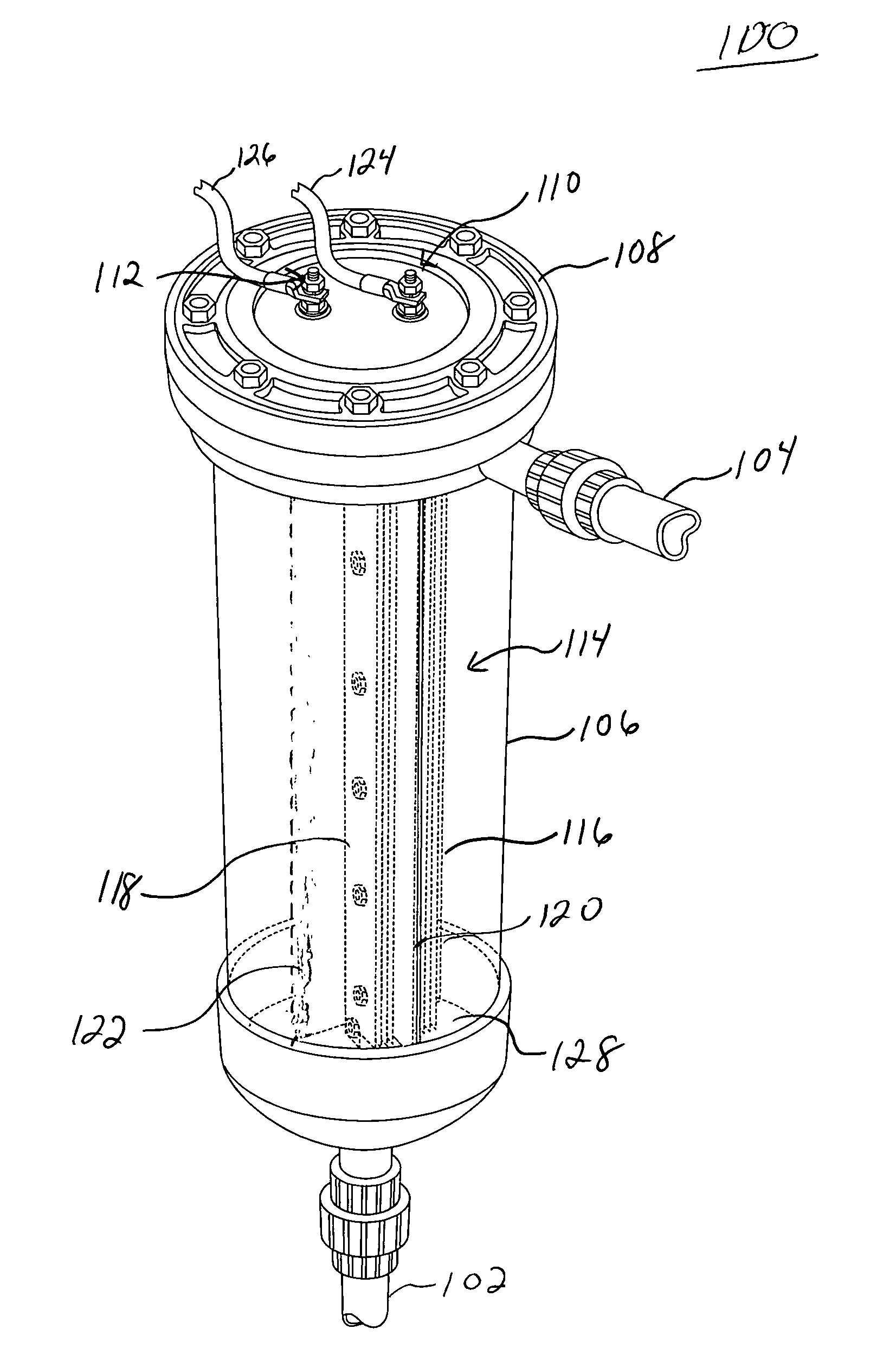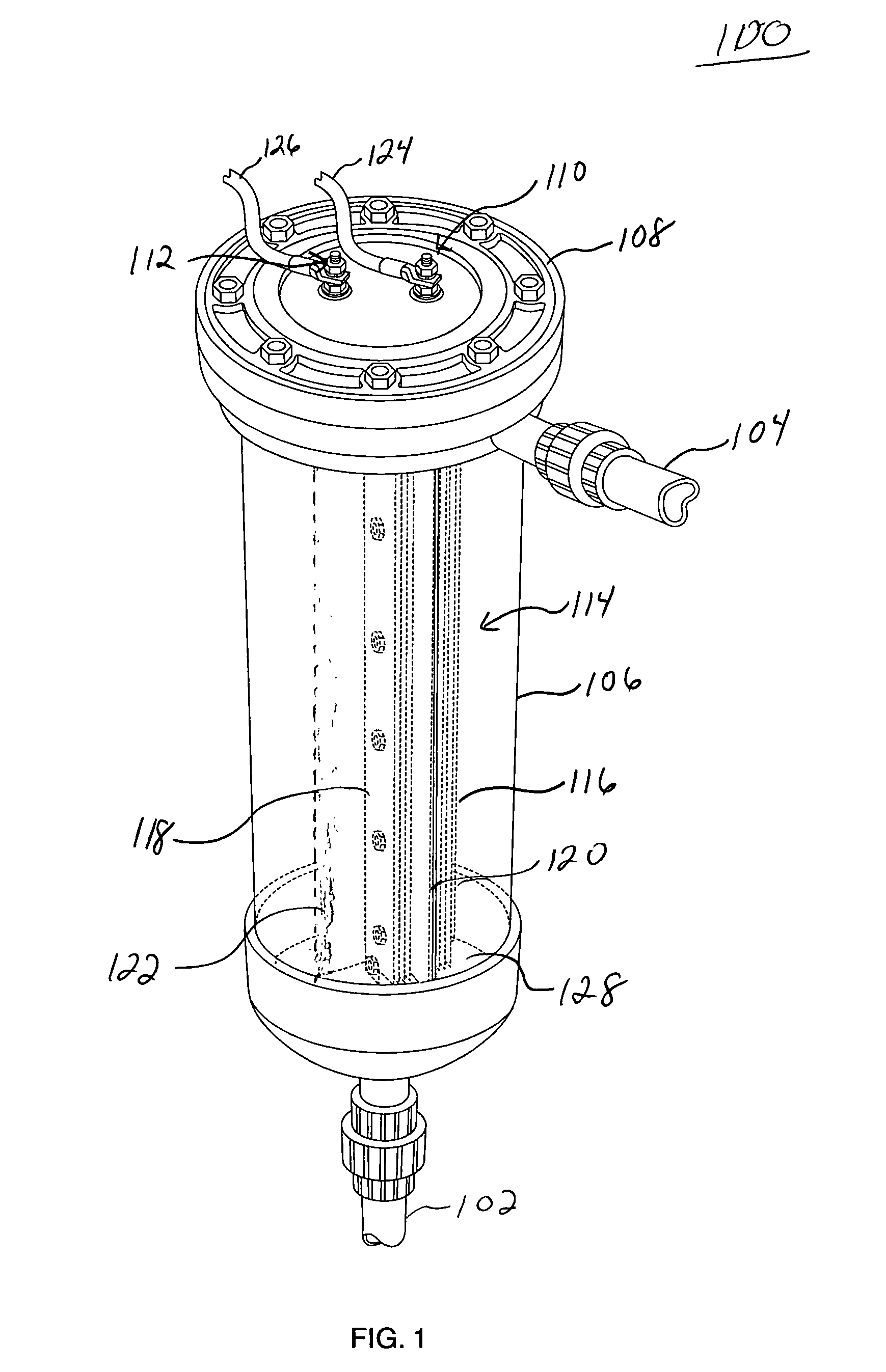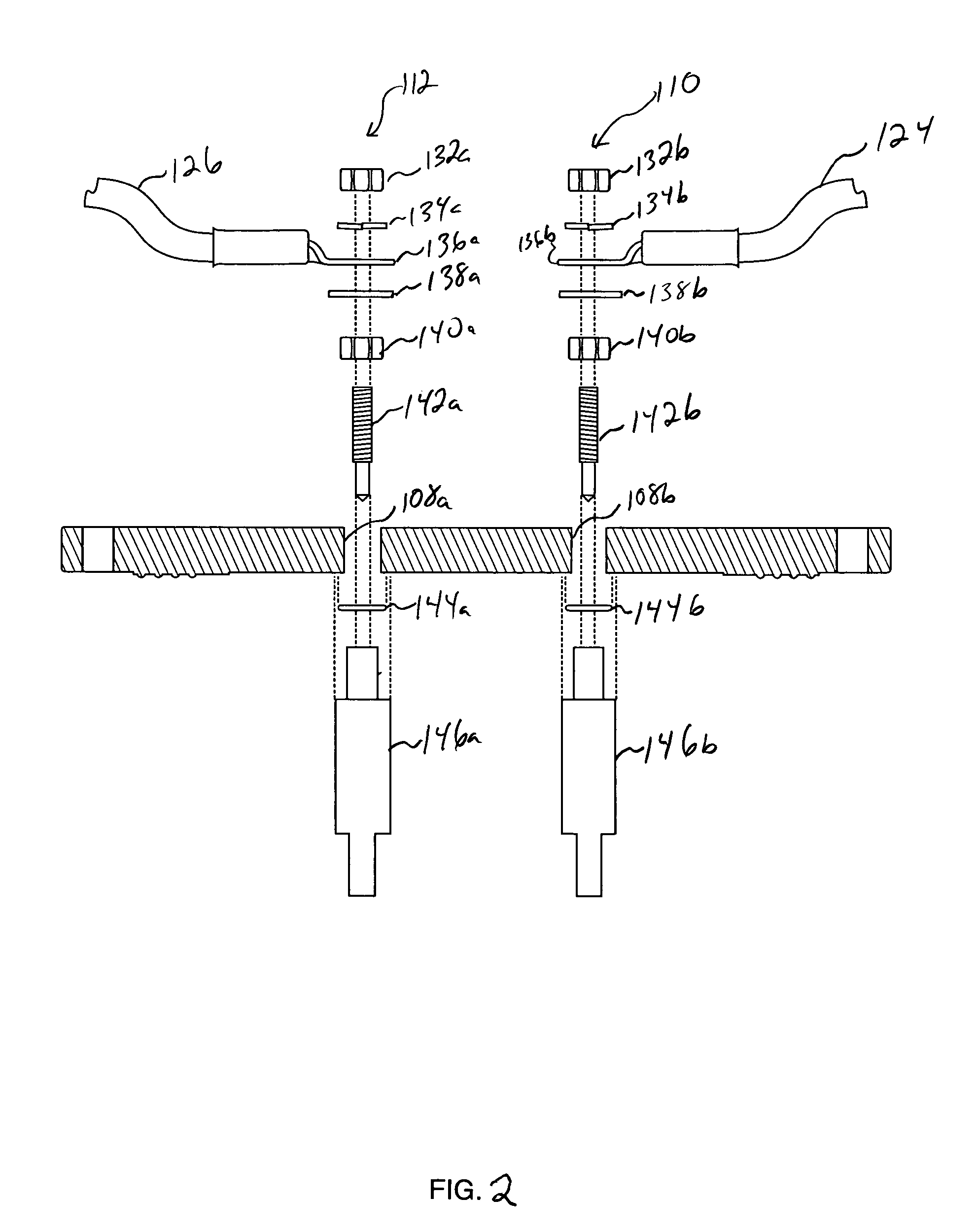Chlorination system for swimming pools and the like
a chlorine system and chlorine technology, applied in the field of systems, can solve the problems of chlorine concentration not constant, unpleasant swimming, strong and offensive odor, etc., and achieve the effects of reducing skin and eye irritation, reducing fading of clothing, and reducing chlorine concentration
- Summary
- Abstract
- Description
- Claims
- Application Information
AI Technical Summary
Benefits of technology
Problems solved by technology
Method used
Image
Examples
Embodiment Construction
[0054]In describing preferred embodiments of the present invention illustrated in the Figures, specific terminology is employed for the sake of clarity. The invention, however, is not intended to be limited to the specific terminology so selected, and it is to be understood that each specific element includes all technical equivalents that operate in a similar manner to accomplish a similar purpose.
[0055]A particularly advantageous feature of the present invention is the spatial arrangement of the anode and cathode sections, allowing for multiple electrode stacks to be arranged around a common axis. Prior art systems teach a chlorinator having multiple electrode stacks to be arranged in a linear fashion, wherein the addition of electrodes extends the size of the electrode stack along a linear path. Additionally, and in order to accommodate this arrangement of cells around a common axis, another advantageous feature of the present invention are the dividers separating flow between th...
PUM
| Property | Measurement | Unit |
|---|---|---|
| voltage | aaaaa | aaaaa |
| polarity | aaaaa | aaaaa |
| electrical charge | aaaaa | aaaaa |
Abstract
Description
Claims
Application Information
 Login to View More
Login to View More - R&D
- Intellectual Property
- Life Sciences
- Materials
- Tech Scout
- Unparalleled Data Quality
- Higher Quality Content
- 60% Fewer Hallucinations
Browse by: Latest US Patents, China's latest patents, Technical Efficacy Thesaurus, Application Domain, Technology Topic, Popular Technical Reports.
© 2025 PatSnap. All rights reserved.Legal|Privacy policy|Modern Slavery Act Transparency Statement|Sitemap|About US| Contact US: help@patsnap.com



